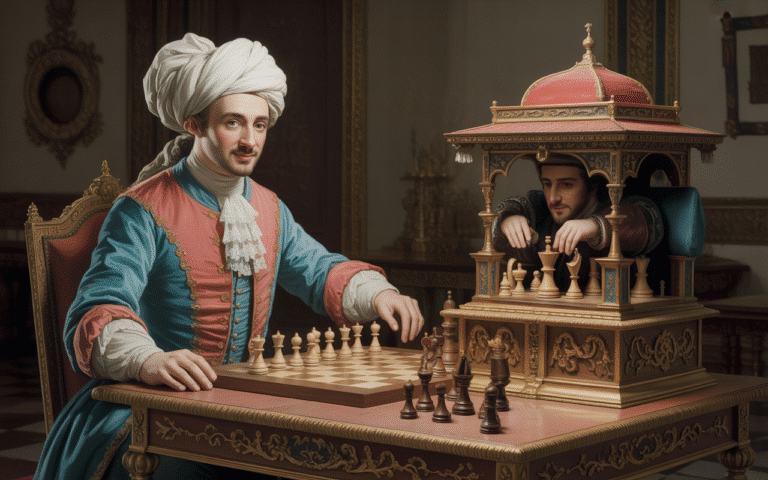The Mechanical Turk: An 18th-Century Hoax Simulating AI

In an era long before microchips and complex algorithms, the world was captivated by a supposed marvel of engineering: The Mechanical Turk. Created in 1770 by Hungarian inventor Wolfgang von Kempelen, this ornate wooden cabinet, topped with a turbaned figure, was presented as an automaton capable of playing and winning chess against human opponents. For decades, it toured Europe and America, astonishing emperors, scientists, and the general public alike, sparking debates about the very nature of intelligence and the potential of machines.
The Ingenious Hoax Unveiled
Despite its seemingly miraculous capabilities, The Mechanical Turk was, in reality, one of history’s most sophisticated and enduring hoaxes. Far from being an autonomous thinking machine, it concealed a human chess master – often a diminutive individual – cleverly hidden within its intricate internal compartments. A system of levers, pulleys, and mock machinery masked the operator’s movements, allowing them to control the Turk’s arm and manipulate the chess pieces. The brilliance lay not in robotic intelligence, but in the ingenious illusion that sustained the belief in its mechanical mind.
Von Kempelen and later owners maintained the deception for over 80 years, successfully convincing many that they were witnessing a machine with genuine intellectual prowess. The secret was eventually exposed, most notably by Edgar Allan Poe in an essay titled «Maelzel’s Chess-Player,» though various theories had circulated for years. The reveal highlighted humanity’s fascination with and yearning for artificial intelligence, even if the technology to achieve it was centuries away.
A Precursor to AI and a Lesson in Deception
While a fraud in its execution, The Mechanical Turk remains a significant artifact in the history of technology and the evolving concept of artificial intelligence. It was a tangible manifestation of the human desire to build machines that could mimic thought and solve complex problems. It challenged perceptions of what a machine could do and what intelligence truly meant, long before the terms «AI» or «robotics» were coined.
Moreover, the Turk serves as a fascinating case study in human ingenuity, showmanship, and the art of deception. Its legacy extends beyond mere trickery; it inspired future inventors, sparked public imagination about intelligent machines, and indirectly contributed to the intellectual groundwork that would eventually lead to the development of true computing and AI. The Mechanical Turk stands as a testament to the enduring human quest to understand and replicate intelligence, even if, in its initial form, it was merely a masterful illusion.
From the opulent courts of 18th-century Europe to modern discussions about machine learning, the tale of The Mechanical Turk continues to resonate, reminding us that the line between simulated intelligence and genuine AI has always been a subject of profound curiosity and, sometimes, elaborate deception.


